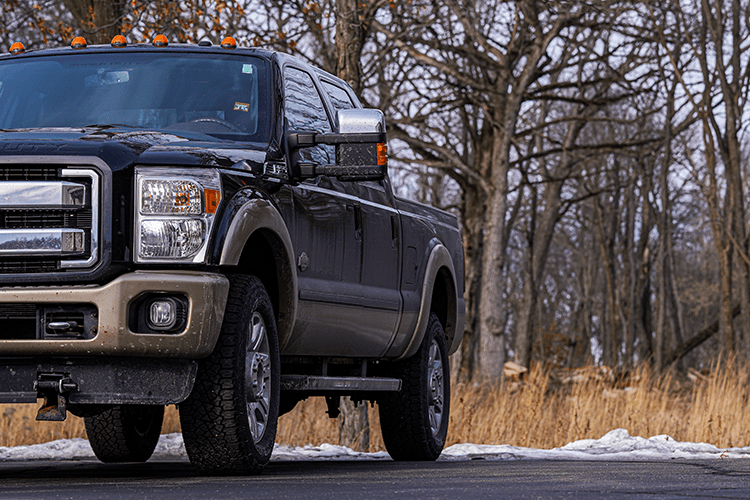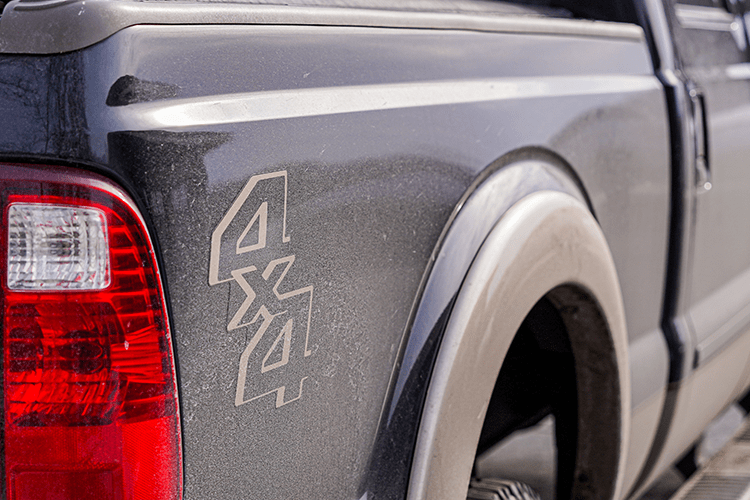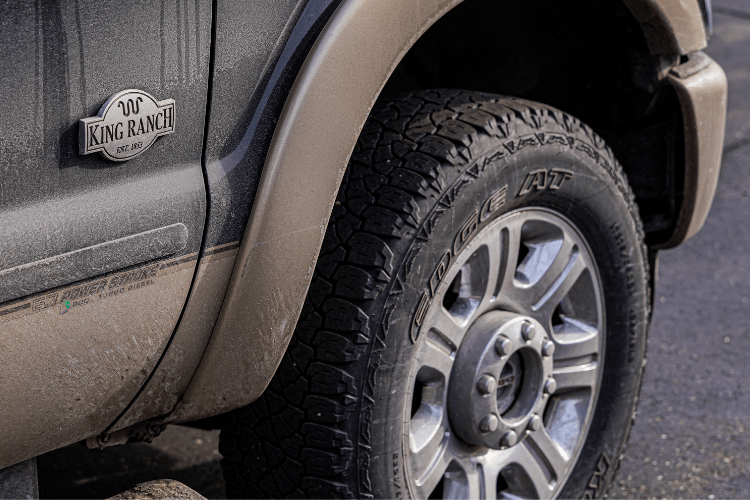The Importance of Four-Wheel Drive (4WD) in Winter

With wither comes snow, ice, and hazardous conditions that are enough to make your knuckles (or hair) turn white. Even the bravest drivers have to collect themselves before getting behind the wheel after a snowfall because the roads become slick, unpredictable, and outright dangerous.
The answer? Four-Wheel Drive (4WD).
Read on to discover the benefits of using 4WD in the winter, how it compares to All-Wheel Drive (AWD), and why you should use the drivetrain with winter tires. By the end of the piece, you’ll have a sound game plan to feel safe behind the wheel, so the only thing that’s white is the snow outside (not your knuckles or hair).

Four-Wheel Drive (4WD) Benefits in Winter
Additional Traction
Traction is the name of the game if you want to stop quickly in slippery conditions. When 4WD is activated, both the front and rear set of wheels are engaged so torque is evenly distributed across the vehicle. Since the drivetrain has all components working together, you will be able to gain more control when pressing down on the brakes. But you will need a good set of tires to ensure proper traction (more on that below).
Helps With Stopping
To be perfectly clear, 4WD will not make your stop any faster. However, the fact that the engine is distributing power to all four wheels at the same time does a tremendous amount to help. For example, Two-Wheel Drive (2WD) distributes all of the braking power to the front two wheels while the rear wheels continue spinning. 4WD corrects this by sending half of the braking power to each set of wheels so all four are working in unison.
Go Off-Road
Whenever you’ve seen a commercial of an SUV traversing over rugged and snowy terrain, that’s 4WD in motion. The drivetrain provides power to all four wheels at the same time so you can accelerate on snowy roads whereas a 2WD would spin its tires. More importantly, most vehicles with 4WD have both a high and low setting. You will want to engage the latter any time you want to go off the beaten path for the most torque possible.

4WD vs AWD in Snow
All-Wheel Drive (AWD) systems have their place on winter roads, too. Similar to 4WD, torque is evenly distributed amongst all four tires to improve traction. However, AWD is mostly effective in freshly plowed streets. AWD will improve the traction in slippery conditions but it won’t be able to handle deep snow. In essence, 4WD is necessary to power through more substantial snowfall, giving it a clear edge over AWD for winter driving.
4WD & Winter Tires
By now it’s clear that 4WD is a suitable drivetrain for snowy conditions but you won’t gain control over the roads without any traction. That’s where winter tires come into play. Installing a set of winter tires with added tread will help it grip the road while the drivetrain delivers the appropriate amount of power to propel the vehicle forward. Having this one-two punch is essential for winter driving. And you won’t have to worry about your primary set being exposed to salt, which causes pitting on chrome wheels.

Bottom Line
Installing winter tires and engaging 4WD is a safe way to drive in snowy weather. The drivetrain evenly distributes engine power to each wheel while the treads of every tire are designed for optimal traction. Whether you’ve lived in a snowy climate your entire life or happen to be experiencing it for the first time, 4WD will get you through the season.
Sources:




